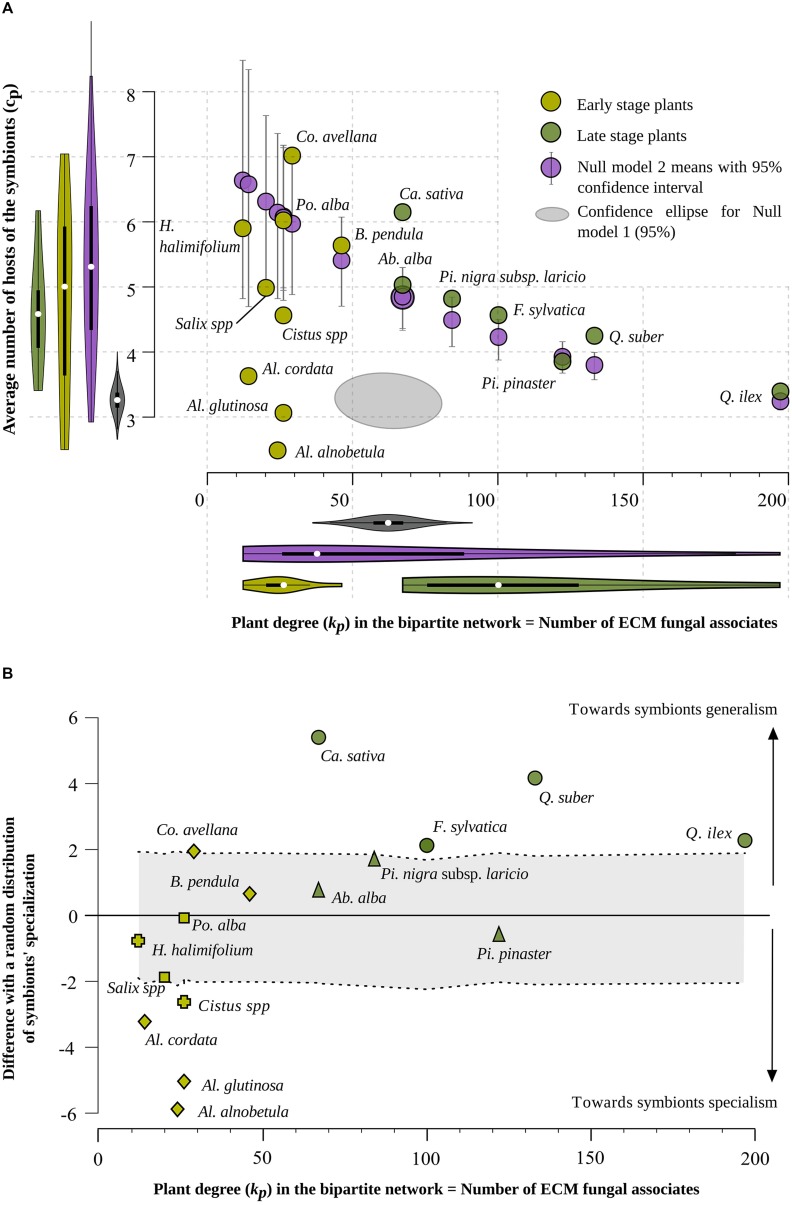FIGURE 3.
(A) Distribution of 16 ECM plant species according to their degree in the bipartite network, kp, i.e., the number of their fungal partner species (X axis), and the average number of host species (i.e., average specialization) of their symbionts, cp (Y axis). Light green and dark green dots correspond to early-stage and late-stage plant species, respectively. Gray ellipses display the 95% confidence intervals for null model 1. The null model 1 consists of a simple random model considering independently each pair of plant and fungal species and drawing a link with a probability equal to the density of links (actual number of links divided by the maximal number of links given the number of plant and fungal species) observed in the real network. Purple dots show positions of plant species in the null model 2. The null model 2 is based on a random distribution of the links in the bipartite network, at fixed bipartite degrees kp or kf for all partners. Bars indicate 95% confidence intervals. (B) Distribution of 16 ECM plant species according to their degree in the bipartite network, kp, i.e., the number of their symbiont species (X axis) and the standardized deviation [standard effect size (SES)] of the average number of host species of their symbionts, cp, with respect to its value in null model 2. A total number of 999 randomized networks were simulated to establish the null situation with which the actual cp values were compared. For plant species located between the two dotted curves, the observed situation does not differ from a random distribution of their links, whereas a plant species located above the upper dotted line shows an excess of generalist species among its associated ECM fungal species, and a plant species situated below the lower dotted line shows a significant excess of specialist symbionts. The following abbreviations and signs are used to indicate plant genera and families: Ab.: Abies; Al.: Alnus; B.: Betula; Ca.: Castanea; Co.: Corylus; F.: Fagus; H.: Halimium; Pi.: Pinus; Po.: Populus; Q.: Quercus; circle: Fagaceae; triangle: Pinaceae; square: Salicaceae; cross: Cistaceae; diamond: Betulaceae.

